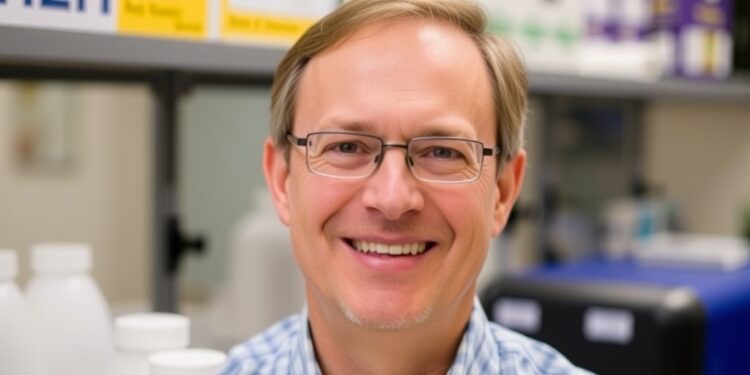Michigan Engineering recently celebrated the remarkable achievements of two of its esteemed professors, Elizabeth Holm and Nicholas Kotov, who have been inducted into the National Academy of Engineering (NAE). This prestigious recognition is one of the highest honors attainable by engineers in the United States, signifying their extraordinary contributions to the field and their pivotal influence on future generations of engineers. The announcement has been met with excitement and pride by the University of Michigan community as it underscores the institution’s commitment to excellence in engineering education and research.
Elizabeth Holm, who serves as the Richard F. and Eleanor A. Towner Professor and chair of the Department of Materials Science and Engineering, has been recognized for her innovative work involving computer simulations to dissect the formation and impacts of microstructures within various materials. These microstructures, which include microscopic cracks, pores, and granules, play critical roles in determining the mechanical and electrical properties of materials. When understood and manipulated correctly, they can enhance a material’s performance or reduce defects that might otherwise compromise functionality.
With a significant part of her career spent at Sandia National Laboratories, Holm’s pioneering computational models facilitated the approval of a groundbreaking lead-free solder material for electronic circuit boards. This advancement occurred during a crucial time when lead was being phased out of use due to health and environmental concerns. Remarkably, Holm’s computational approaches provided a robust basis for evaluating the solder’s effectiveness over a projected 50-year lifespan, making it a landmark moment in the realm of materials approval based on computational predictions.
Beyond her contributions to solder technology, Holm has further advanced the field by developing machine-learning tools aimed at aiding scientists and engineers in the analysis of microstructures. This computational innovation has empowered the materials research community to extract maximal understanding from minimal data, an ability that proves indispensable in scenarios where data collection is challenging or expensive. The significance of Holm’s work cannot be overstated; it represents a shift towards a more data-driven approach in materials science.
Reflecting on her election to the National Academy of Engineering, Holm expressed her astonishment and gratitude. She emphasized the collaborative nature of scientific endeavors and credited her colleagues and students for their supportive roles. This acknowledgment highlights the interconnectedness of academic research and underscores the notion that significant advancements are often the result of teamwork and shared intellectual pursuits.
On the other hand, Nicholas Kotov, serving as the Irving Langmuir Distinguished University Professor and the Joseph B. and Florence V. Cejka Professor of Chemical Engineering, has been nominated for his groundbreaking methods that bring together nanoparticles, nanosheets, and nanofibers. These small-scale components can self-arrange into composite structures that not only emulate the properties found in biological materials but can also be manufactured at scale, opening new avenues for industrial applications.
Kotov’s work in creating composite materials that exhibit properties exceeding those of their individual components stands as an impressive feat. An exemplar of his innovative creations is a Kevlar-based nanofiber structure that mimics cartilage, noted for its remarkable strength, flexibility, and porosity—qualities that make it suitable for high-performance batteries. His research aims to revolutionize energy storage technologies, particularly in developing batteries that can outpace conventional lithium-ion counterparts in energy density and recharge capabilities.
Additionally, Kotov has ventured into the realm of chiral nanostructures, which possess unique optical properties. These twisted materials, engineered at the micro or nanoscale, have potential applications in medical diagnostics and pharmaceutical production. Through these chiral structures, Kotov and his team are exploring methods to generate and discern circularly and elliptically polarized light. Such capabilities could transform various sectors, from enhancing sensors for biomedical usage to improving image recognition systems powered by artificial intelligence.
Both Holm and Kotov have made strides that transcend individual fields of study. Their respective works not only advance materials science and chemical engineering but also contribute to broader societal goals, such as sustainable energy solutions and improved healthcare diagnostics. The recognition by the NAE is not merely an accolade; it represents a commitment to leveraging their knowledge and expertise to make a positive impact on the world.
Elucidating Kotov’s sentiments following his election, he expressed a renewed sense of purpose and ambition. Rather than resting on the laurels of this prestigious honor, he is invigorated to push the boundaries of research further, with an emphasis on benefiting society. This drive underscores an essential characteristic of dedicated researchers: the relentless pursuit of innovation and improvement.
As both professors continue their groundbreaking work, they serve as inspirations within their fields, exemplifying the spirit of engineering that seeks to harness knowledge for the betterment of humanity. Their achievements highlight the essential role of academic institutions in fostering research that addresses pressing global challenges and encourages future engineers to engage in responsible, impactful practices.
In conclusion, the recognition of Elizabeth Holm and Nicholas Kotov by the National Academy of Engineering is a testament to their outstanding contributions to engineering and materials science. Their innovative approaches and dedication to their fields have significantly influenced how engineers address current and future challenges. As they embark on the next chapters of their careers, the engineering community eagerly anticipates the continued impact of their research and leadership.
Subject of Research: Innovative materials science and engineering techniques.
Article Title: Celebrating Engineering Excellence: Holm and Kotov Inducted into the National Academy of Engineering
News Publication Date: October 2023
Web References: University of Michigan Materials Science | University of Michigan Chemical Engineering | National Academy of Engineering
References: Not available.
Image Credits: Not available.
Keywords
Tags: computer simulations in materialscontributions to future engineersElizabeth Holm materials scienceengineering education excellenceinnovative engineering researchlead-free solder developmentmaterials performance optimizationMichigan Engineering achievementsmicrostructures in engineeringNational Academy of Engineering inductionNicholas Kotov chemical engineeringUniversity of Michigan engineering





